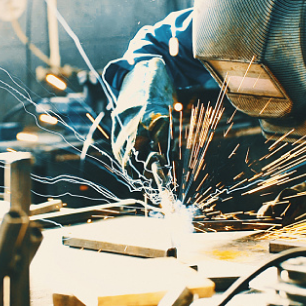Jump to:
New CWI Syndrome
You passed the difficult AWS Certified Welding Inspector (CWI) test, and you are now a bona fide CWI. You celebrate and commiserate with others who took the test with you. At first, you love the instant notoriety. You might even experience a touch of the so-called New CWI Syndrome — a mild superiority complex.
Eventually, though, you realize that everyone expects you to know everything about every code, welder qualification, certification, etc. You try to hide the fact that you don’t know very much at all. Unless you have a mentor, you’re figuring it out as you go. You probably only know one code (AWS D1.1, Structural Welding Code — Steel or D1.2, Structural Welding Code — Aluminum, etc.) and not much more.
Things get tricky when you consider that CWIs are not required to know how to weld and welders don’t have to know anything about inspection. That’s where a rift often arises.
However, if we can all agree that welding has discontinuities and defects, perhaps we can grow together. According to the Hobart Institute student workbook EW512-3, Welding Procedures and Qualifications, welding imperfections fall into three categories: external dimensions, structural discontinuities, and weld/base metal properties. Once we understand the terminology and see real examples, we might finally get on the same page.
Welding flaws that affect external dimensions relate to the shape, size, and contour of a weld. These include excessive reinforcement, incorrect size, incorrect profile (overlap, undercut, spatter, convexity, etc.), and incorrect final weld dimensions. Structural discontinuities refer to internal consistencies such as cracks, porosity, slag inclusions, incomplete fusion, and inadequate joint penetration. Issues with weld and base metal properties typically involve the match (or mismatch) between the two. These include (but are not limited to) tensile strength, yield strength, ductility, and impact strength.
As a welder and inspector, I suggest that CWIs become familiar with what procedures actually call for. Is the position or order of operations even possible? If not, welders won’t do it. In that case, the only solution is to rewrite the procedure. Additionally, inspectors should speak in welder terms if it doesn’t sound forced. Hint: If you don’t know how to weld, don’t pretend you do. Welders can be a brutal bunch if they think you’re an impostor. Own what you know. You are a CWI. You passed a very difficult test, and you understand discontinuities and defects. If you don’t try to tell a welder how to fix their mistakes, you might make it out alive.
As far as welders/welder operators are concerned, I suggest that we ask for the procedure and mock-up (or example part) in advance. If someone else could weld it, we could as well. As an example, over the last two years, I have worked closely with a company that welds and brazes HVAC systems for aerospace. Customers provide a mock-up of welded and/or brazed parts, and employees follow procedures and attempt to reproduce those results. If difficulties arise, they reach out to the customer for clarification. They ask questions about expectations. I’m not saying it’s all sunshine and roses, but it is not an us-versus-them situation either.
We were all new once. As you gain experience, you improve your CWI skills and build bridges with welders and supervisors. Hopefully, you will also become humbler. It’s okay to not know everything. In fact, it would be boring if we did.
SHANEN ARANMÓR (shanen@weldlikeagirl.us) is founder of Weld Like A Girl™, Yuma, Ariz., and an AWS director-at-large.


